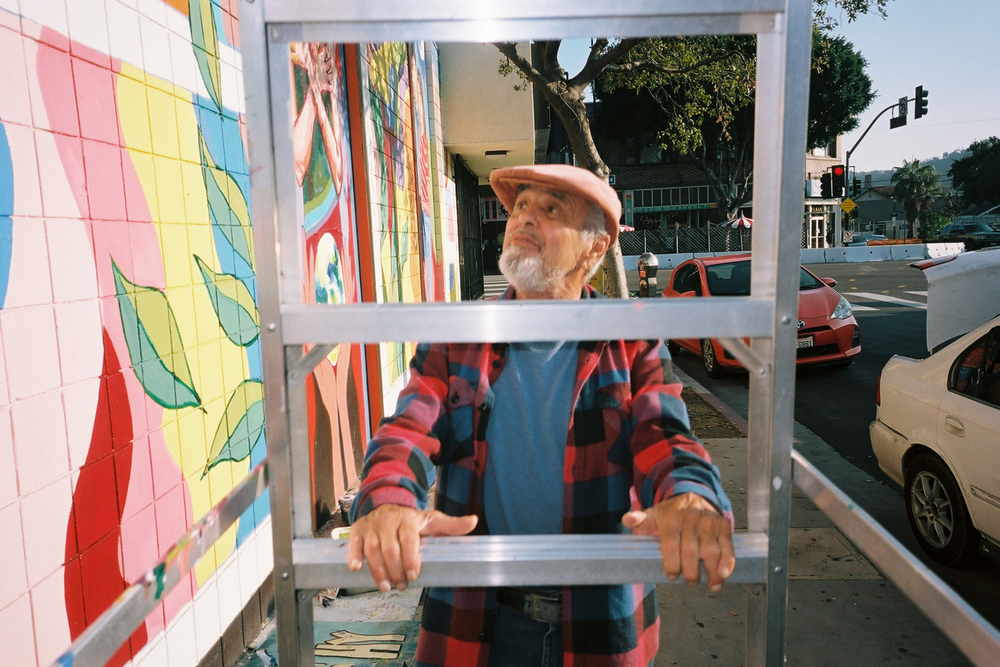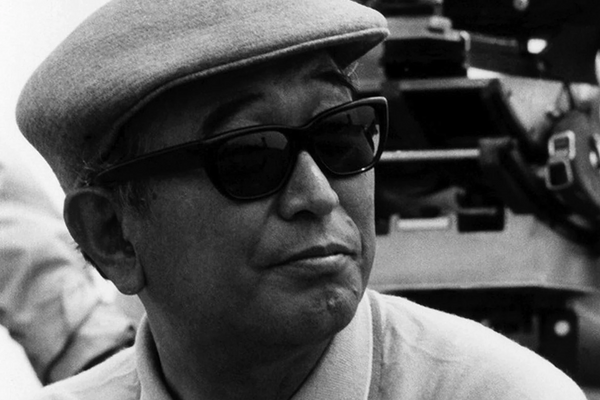The Union Pacific Railroad bisects Los Angeles, weaving from the port through working class LA: Wilmington, Long Beach, Compton andSouth Gate - before branching out to distribute imported goods across 23 states. Drawing an almost perfect geographic parallel to the hyper-urbanized LA River and the 710 freeway, this corridor has become an epicenter for LA’s mural and graffiti culture; a tapestry of street tales, hood hieroglyphics, and ethnographic evidence of the city’s deep Chicano roots - a temporary autonomous zone for anyone with a streaker or can of spray paint.


On any given drive down this stretch of South LA, one can spot out elaborate burners, powerful murals, tags, and throw-ups from the city’s legendary crews and artists like STP, UTI (Under The Influence), LTK (Let Them Know), and OTR, many of whom have been canvassing the industrial LA streets since the mid ‘80s. Over the past three decades, street artists have strategically positioned their works on the slanted concrete slabbed walls of the LA River and atop the train cars and abandoned buildings dotting the Union Pacific rail tracks north into Downtown and East LA - a sort of social reclamation of city’s streets, documentation of social injustices, and a declaration of ownership of the city itself. While the average commuter might miss it, there exists an entire ecosystem, history, and ancestry around Los Angeles’ omnipresent street art - one only needs to look up.

Graffiti and muralisms roots can be traced back to prehistoric times (cave paintings in ancient Egypt and Olmec civilizations were, after all, not supremely different in practice); however, its contemporary iteration - particularly in Los Angeles - links directly to early 1900s Mexico in the midst of a bloody Mexican Revolution, which gave rise to a generation of history’s most fierce liberators and revolutionaries.
The Mexican Revolution created a pathway for public artistic expression and uprising. Leaders like Dr. Atl and Vasconcelos guided the Mexican people by intertwining theories of labor organization and direct democracy with the social need for emphasis on art, literature, and science. Their countercultural movements inspired a new batch of artistic revolutionaries that would take these values and apply them in a more socially aware and visually provocative way. In 1921, after a decade of devastating and politically complex civil war, a nationally organized muralist movement began to take hold, led by painters Diego Rivera, Aurora Reyes Flores, Rina Lazo, and the dreamy symbolism of the legendary Siqueiros and Orozco. These painters shared their social realities and concerns through massive, emotionally invested murals, holding a mirror to Mexican society at a time in which the country was rebuilding their cultural and political identity; “a bridge of solidarity between the artists vision and the public eye,” as described by archival artist/historian and former UCLA professor Sandra de la Loza.

De la Loza knows what’s up when it comes to muralism, graffiti, and how these expressions intertwine to reflect the Mexican American experience. An East Los Angeles native, Sandra’s work as an archival-based artist is intent on reframing history as we know it by making invisible stories, artifacts, and voices visible. Coming from a lineage of experimental Chicano artists and activists, her perspective is profound; there is a powerful nature to the ideas she presents. Her online bio states it best:
“By gathering, slicing, blowing up and remixing archival material, Sandra explores History as an elastic space of practice, one that can be shaped, stretched and expanded while making visible the processes in which dominant narratives are created.”
Powerful indeed.
We met up at a sidewalk coffee shop table tucked in Highland Park (down the block from my uncle’s pizza shop where I learned to ollie and sling a paint can in the ‘90s) to discuss how the expressions of graffiti and muralism interact today, and whether that relationship is symbiotic, historically correlated, or straight up hostile.
As any two Angelenos do when they meet, we briefly exchanged personal memories of the neighborhood and scoffed at a handful of culturally unaware businesses that had popped up in the past few months. Despite a changing and increasingly expensive Los Angeles, we realize we are in an ever-moving, kinetic social structure, and must take changes in stride while preserving and celebrating our unique cultural identities.
Sandra walks me through the continued history of muralism in LA.
At the end of the Revolution’s military phase - from the 1920s to about the late ‘50s - there was an intentional democratization of art and art spaces which became the central thesis of the first wave of the post-revolution street art and muralism movement. Prior to, art was almost exclusively an object of the wealthy in Mexico. Its rapid democratization shone light on the severe socioeconomic discrepancies between the wealthy and the poor - as well as a clear lack of a middle class to support any actual arts industry/economy that would come to fruition (a code that we have yet to crack).
As Mexico began evolving rapidly from a mostly rural society to an industrialized country, so too did the thematic elements in street artists' work; murals took on a more philosophical, probing role in the public’s psyche. Slowly, as the new Mexican identity and society began to take form, muralists began to interpret class, culture, work and race conflicts that were becoming part of their reality.
By the ‘50s, ‘60s, and ‘70s even more elements had filtered into a younger, provocative generation of street level muralists, dramatically threading in increasingly radical concepts for the time like communism, social/capitalist criticism, Marxism, women’s equality, denunciation of ruling classes & hierarchies, and celebration of Aztec roots and rural working class/workers unions. Eventually, the grassroots messaging of street artists became contradictory to the conservative and capitalistic values that were being adopted by Mexican politics; as such, the Mexican government abandoned the muralism projects they so vehemently supported earlier in the revolution. Murals became privatized - another toy for the bourgeoisie to commission at their liking - and street art in Mexico largely went underground. By then, the radical ideals and powerful social messaging had crossed north over to Los Angeles, where Mexican Americans in Los Angeles - Chicanos - were developing their own unique creative, cultural, and social identities, separate from the homeland.
Street art and muralism (after a 70’s mural moratorium that only fanned the flames of street art as revolutionary tool), filtered through the lens of Los Angeles’ urban sprawl, would take the ideals of the Mexican muralism movement and develop it into a more free, street-level movement intent on breaking outside of the boundaries of institutional spaces. This includes the foundational framework for graffiti as an artform, pitted against traditional/legally commissioned “muralism” through criminalization of graffiti.
The core tenets of street art, as described by de la Loza, are as follows:
- Expand consciousness
- Politicize
- Celebrate
- Obscure aesthetics in hyper urbanized landscapes
As it happened, Sandra de la Loza’s older brother - legendary muralist Ernesto de la Loza was only three blocks away putting the final touches on a Planned Parenthood-commissioned mural that the siblings had been working. The piece - “Earth Mother” - is a soulful homage to the people of East LA, commemorating the everyday humans whose roots and culture have inspired a generation of Chicanos and Chicanas. Its vibrant colors, subtly psychedelic and supremely visceral, is a technical masterpiece, meticulously layered with about five coats of master paint. Ernesto is a master muralist; Sandra understands culture in Los Angeles like no other - together, they have developed a mural that is equally reflective of the Mexican American East LA experience while speaking directly to a Highland Park in the midst of an enormous socioeconomic shift.
At the center of the mural is a reflection of the late Soraya Medina, a beloved, warrior-like community leader who advocated tooth and nail for Los Angeles, fostering a cultural arts scene, safe green spaces (Highland Park’s gorgeous “Tierra de la Culebra” is largely a product of Medina’s community activism), holistic health practices (inspired by indigenous healers), and important food justice conversations. Godmother Soraya passed away of breast cancer in late 2020, but “she’ll live forever through this mural,” proclaimed Ernesto gesturing to her radiating presence on the artwork. “And that’s how we reflect and celebrate her legacy.” That is the very strength of Ernesto’s murals - ensuring LA’s invisible histories and true heroes become cemented in community and culture without limit, especially as gentrification continues to threaten our collective histories.


After dissecting the technical intricacies of his massive works, Ernesto leaned back on his white sedan, arms crossed, trunk popped - filled to the brim with various paints, tools, brushes, and canvasses - and expanded on his journey to art and enlightenment through the lens of a born and raised Angeleno, as well as his relationship with graffiti and graf artists.
“We’re your big brothers,” Ernesto comments as he nods towards a wildstyle tag thrown up on a nearby wall of a vacant business front. “We’re not enemies, graf artists and muralists. But who cares about your name, your tag… I want to know what you represent as a human.”
“Both art forms come from outside institutional spaces,” adds Sandra. “They are both modes to re-form and re-define.
“Muralists want to beautify - to develop a bridge of solidarity. Graffiti writers seek to reclaim without asking.” This is the fundamental difference, one that has no doubt led to friction amongst an older generation of muralists and graffiti artists, who throughout LA history have encroached on the same wall space that muralists have called home, reclaiming spaces with a punk-like disregard for what or who was already there. Where muralism beautifies; graffiti defy’s.
As a student of the graffiti game, particularly in the ‘90s, I was curious to probe this relationship. I make the point that graf writers are angry at a society that has left them in the shadows - that the expression is raw energy, unfiltered, without permission. Ernesto responds with an air violin and a sly smirk. “Sob story. We’ve always been angry.”
He holds a valid point. De la Loza points to the immediate aftermath of the Rodney King riots as a moment when the LA community, Black, Brown, and otherwise, had coalesced around muralism as a means of expressing anger - and graffiti artists came to show solidarity alongside muralists, a relationship strained due to limited wall space in the streets of Los Angeles.

Shortly after the riots, Ernesto, shoulder to shoulder with gang members, graf writers, traditional muralists, and tagbangers, worked collectively and across styles to create one of the most moving works in Los Angeles mural history, titled “Bridges to East LA,” which explored the context of war, police, cultural imperialism, urbanization, and economic exploitation, all especially relevant in a ‘90s LA in the midst of developing its own arts and cultural identity. Through this work came a shared moment of resistance amongst street artists of the old guard and the new.
Not much has changed since. De la Loza calls out the absurd militarization of local police forces and the “genocide of young Brown and Black men by LAPD,” especially 14-year old Jesse Romero, who was senselessly murdered by police officers in Boyle Heights in 2018 - a case in which no justice has been served.
There is more anger towards oppressive social machinations than ever. Street artists have no shortage of visual discourse to engage in today, yet muralism in Los Angeles is a faltering artform populated by Nipsey Hussle and Kobe memorials, celebratory in nature for certain, but one-dimensional when compared to the elaborate, thoughtful and critical works put forth by de la Loza and the like. Consequently, graffiti has become Los Angeles’ focal street art - a form more coded in the letter; its content more obscured and abstracted.
“I have a lot of hope for graf artists and revolutionaries, but we need to step up.”
Perhaps there will be a natural reconvergence of muralism and graffiti; a grassroots, socially inquiring, culturally representative street art that is respectful of its historical predecessors and their shared struggles while boldly and loudly standing against oppression, without boundaries, without rules - free.

The de la Loza’s are Los Angeles, personified. Their roots extend so deeply into this city for generations past; their father, still going strong at 92, is an OG 1st generation Maravilla, a tribe of Chicanos who stood together firmly and without hesitation in a horrifically prejudiced 1940s Los Angeles. They are considered to be among the first gangs established in East LA. In a beautiful moment of happenstance, I was fortunate to share a moment with Sandra, Ernesto, and their father together - generations of Los Angeles history, art, mythology, culture, and anecdotes, all in one place: home. These are truly special humans; their works will tell generations to come of our invisible heroes and unsung community leaders.
I stop Ernesto momentarily as he describes one of his most memorable murals, “Persistence of Energy.” It sounds too familiar.
Beneath the railroad tracks (a freight train to the nearby port of LA), steps away from the Carmelitos Projects in North Long Beach, where I came up, stand two of Ernesto’s remaining eight murals, both completed in 1989.
As it turns out, Ernesto de la Loza has been a figure in my life for decades, quietly whispering and reflecting the realities of my world from the very walls within which I was raised. Street art is in constant dialogue with us, perhaps even subconsciously, reminding us to move forward collectively, determined, and enlightened by our shared histories and cultures.
---
Recommended Viewing: Mur Murs - Directed by Agnès Varda, 1981


